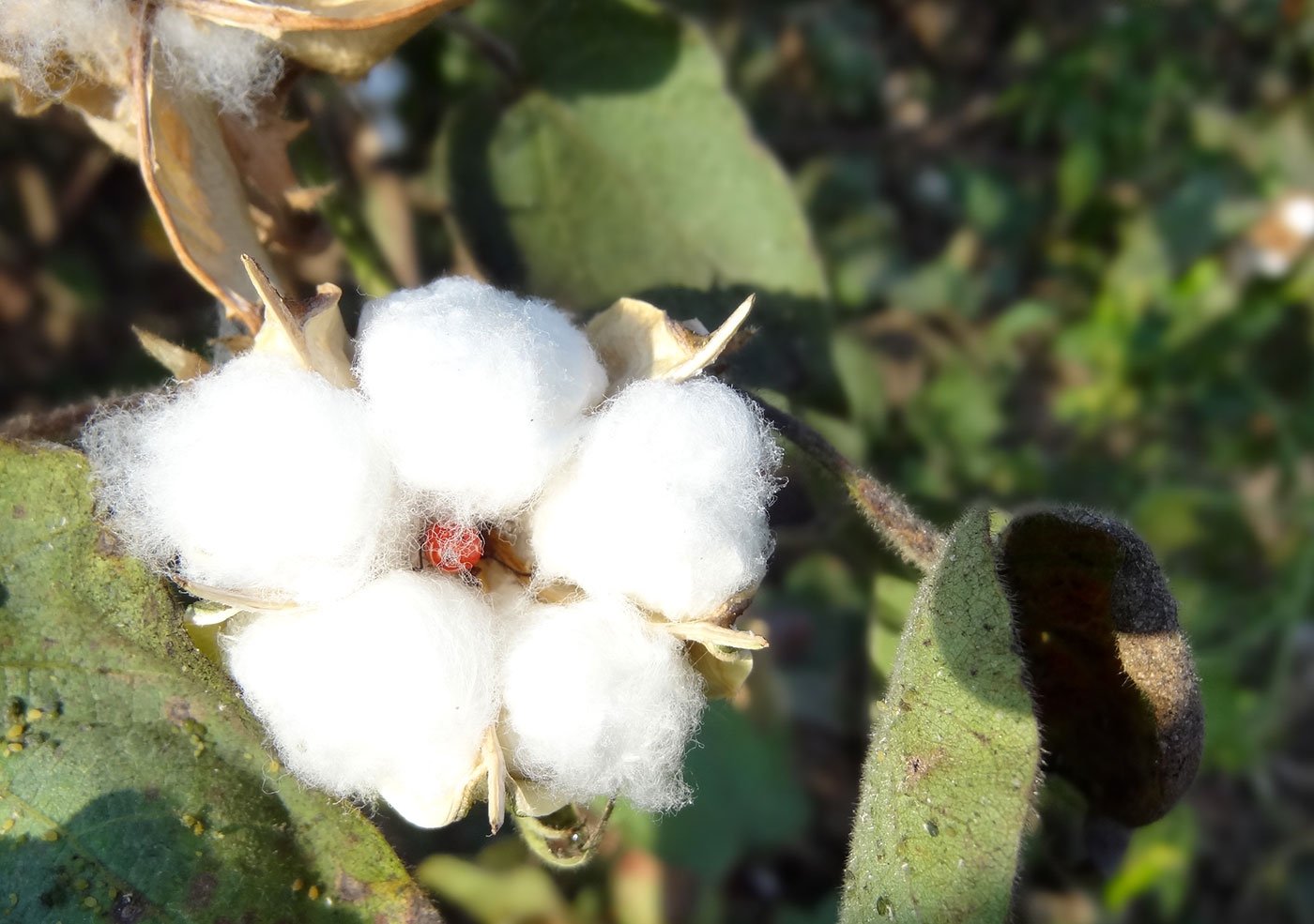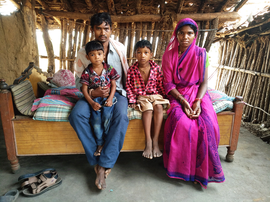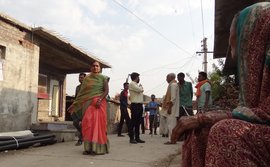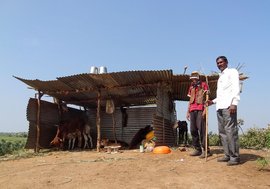The black scars dotting the green bolls of a wilting cotton plant on Ganesh Wadandre’s farm carried a message for scientists working on the ‘white gold’: go find a new antidote.
“Those are the entry points,” said Wadandre, a five-acre farmer who is well regarded in Amgaon (Kh) village of Wardha district. The worm, he added, must have drilled into the boll from these points.
“If we crack it open, you’ll see a pink-worm devouring it from within,” he said, exuding nervousness and anger. As he cracked open the boll, a pink-coloured worm, less than a centimetre long, woke up twirling, as if to say ‘hi’. It had devoured the boll before the cotton’s white lint could form, leaving it worthless.
“A worm,” Wadandre, 42, said when I first met him in November 2017, “lays thousands of eggs and multiplies into millions of worms within days.”
Because the worm is inside the bolls, farmers cannot know of the hidden damage until the bolls burst. This can bring sudden shocks during the harvest and at the market yards, when the bollworm-damaged cotton fetches a much lower price.
Wadandre’s account spoke for cotton growers across Maharashtra, but especially in western Vidarbha’s cotton belt, through the winter of 2017-18, at the peak of the crop’s harvest. In this region, cotton is usually planted between July and August, and harvested from October to March.
Many hectares of cotton fields were devastated by swarming armies of the pink-worm. They caused damage not seen in 30 years. The fields around Wadandre’s farm bore the tell-tale signs of the pink-worm attack: black bolls, wilting and scarred, sprouting into dry blackened lint of poor quality and little worth.
It was this pest that drove the profuse and lethal use of pesticides from July to November 2017 across Maharashtra by farmers desperate to save their cotton crop, though they knew it would not decimate the pink-worm. (See Lethal pests, deadly sprays )
“No pesticide is useful for this,” Wadandre said. “It is that lethal. What’s the use of Bt-cotton now?”
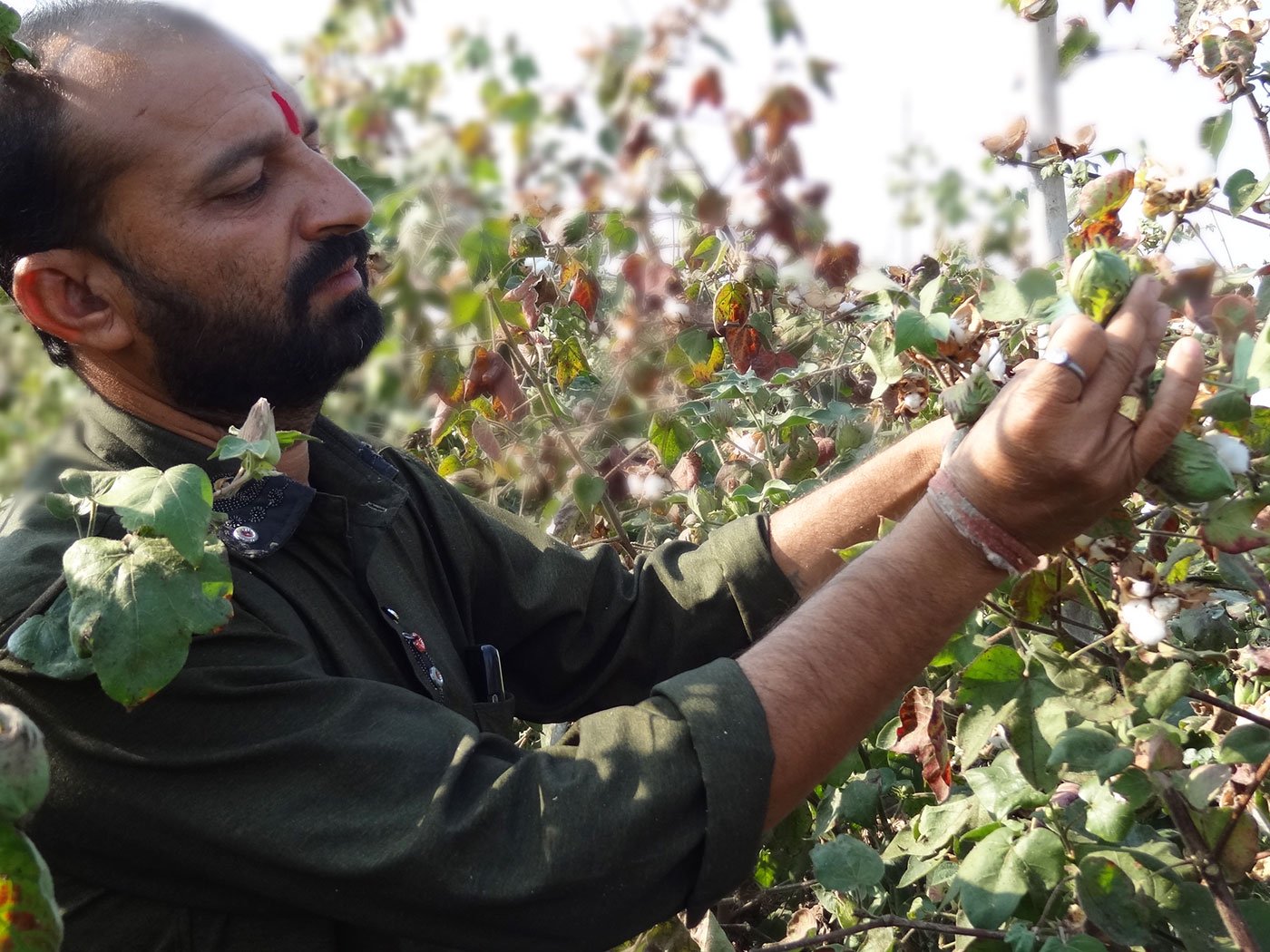

Ganesh Wadandre of Amgaon (Kh) examines pest-infested bolls on his farm: 'No pesticide is useful for this. It is that lethal. What’s the use of Bt-cotton now?'
On an acre of his cotton field, irrigated from dug-well water, Wadandre could harvest 15 quintals of cotton on an average – this time, his yield was down to five quintals. Wadandre estimates he lost at least Rs. 50,000 per acre – for him, a staggering amount.
On rain-fed farms in the village, which do not have well irrigation, farmers could not harvest even three quintals of cotton this season. The state government has announced some compensation – around Rs. 10,000 a hectare for a maximum of two hectares. If Wadandre qualifies, he might get a bit of relief.
Estimates based on surveys of crops done by gram talathis and krishi sevaks (of the state revenue and agriculture departments) around November and then again in February-March indicate that the pink-worm infestation affected over 80 per cent of the 42 lakh hectares under cotton in the state. Each farmer reportedly lost 33 per cent to over 50 per cent of standing crop.
In January 2018, Maharashtra’s Department of Agriculture predicted a dip in cotton production and bales by 40 per cent, implicitly admitting to the large-scale pest-driven destruction. The state produces, annually, an average of 90 lakh bales of cotton (with 172 kilos of lint per bale). A quintal of cotton contains 34 kilos of lint, 65 kilos of cotton-seed (used for extracting oil, as well as de-oiled cake for cattle-feed) and a percentage of dirt or waste. In March 2018, one quintal of cotton was fetching Rs. 4,800-5,000 in Vidarbha’s markets.
India has about 130 lakh hectares under cotton in 2017-18, and reports from the states indicate that the pink-worm menace has been widespread in Maharashtra, Madhya Pradesh and Telangana. Gujarat, which was tormented by this worm two years ago, has partially addressed the problem by planting early-varieties of cotton so that the bulk of the crop is harvested before winter sets in, when the worm multiplies.
The Ministry of Agriculture of the government of India acknowledges the problem, but has rejected the demand from Maharashtra and other states to de-notify Bt-cotton – a move that will change its status to regular cotton since Bt’s efficacy has gone. (This in turn would impact seed prices, and seed companies’ royalties and profits, and will be covered in another story on PARI.) Instead, in July 2017, the Centre asked all the cotton-producing states to deal with the menace on their own “by involving various stakeholders.”
The return of the pink-worm
The return of the pink-worm first set alarm bells ringing in 2015. That year, the Indian cotton research establishment was deeply worried about the “breakdown” of the genetically modified (GM) Bt-cotton technology. Reports had come in from the field of the return of the pink bollworm on crops in all major cotton-growing states, including Gujarat and Maharashtra.
Though the pink pest had first showed up sporadically on Bt-cotton in 2010, in November 2015 farmers in Gujarat reported a massive bollworm infestation on their cotton crop. The inch-long worm, chewing the boll from inside, looked in the pink of health, signalling the breakdown of this potent and expensive GM cotton – that was meant to combat infestation by that very worm.
In the last week of November 2015, a farmer in Gujarat’s Bhavnagar district plucked a few cotton bolls from a plant on her field and cracked them open for a team of visiting cotton experts to see what lay inside. “She was very angry,” recalled Dr. Keshav Kranthi, the principle scientist who led that team, when I interviewed him in February 2016. Dr. Kranthi was then the director of the country’s apex Central Institute of Cotton Research (CICR), Nagpur, and is currently the director (technical) at the Washington-based International Cotton Advisory Committee.
The farmer’s anger was triggered by her imminent losses: the small but menacing pest had eaten into her cotton yield as well as its quality. But the scientists, aghast to see that the pink coloured worms had devoured the green cotton bolls from inside, were worried for reasons beyond that.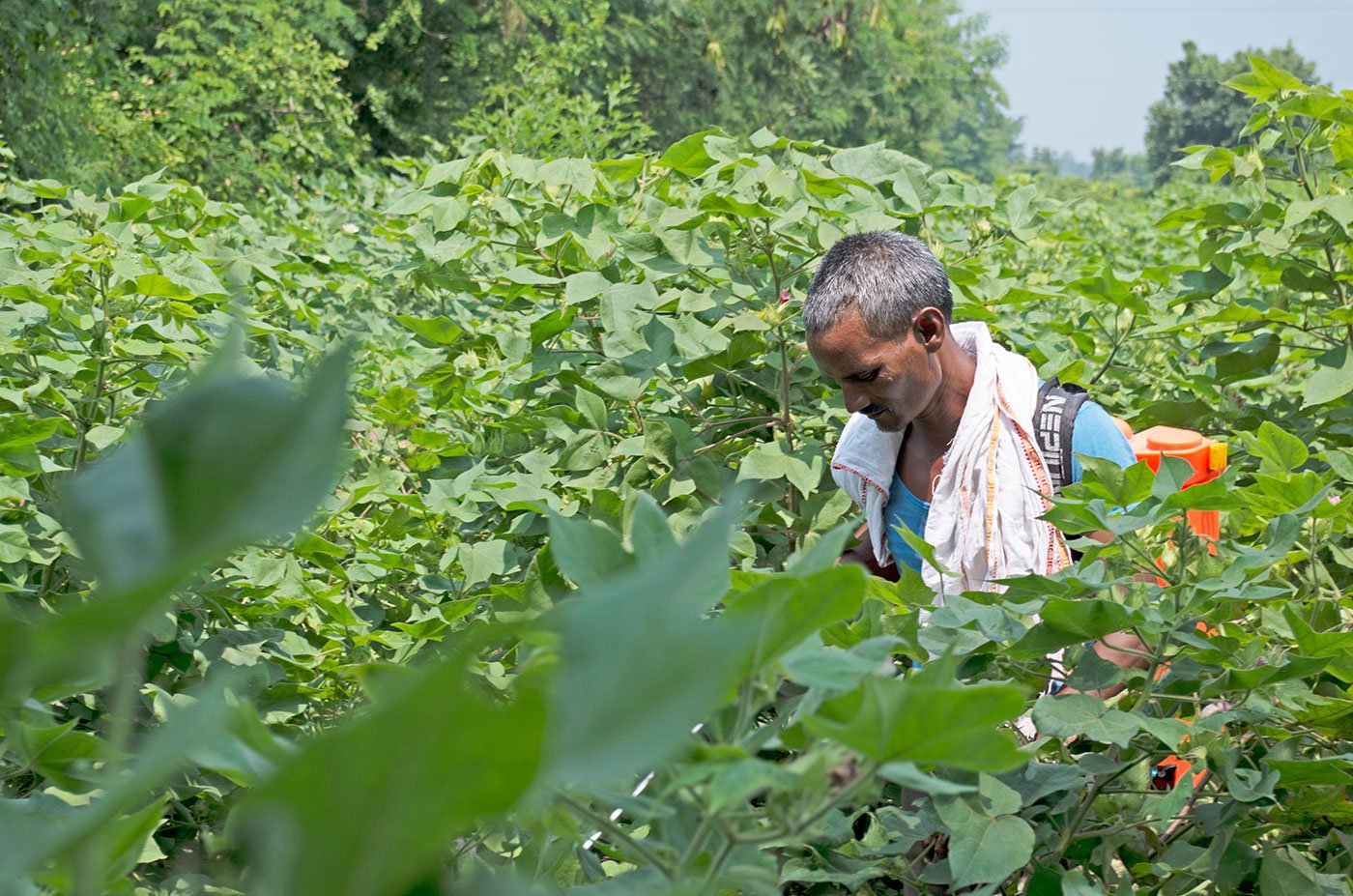
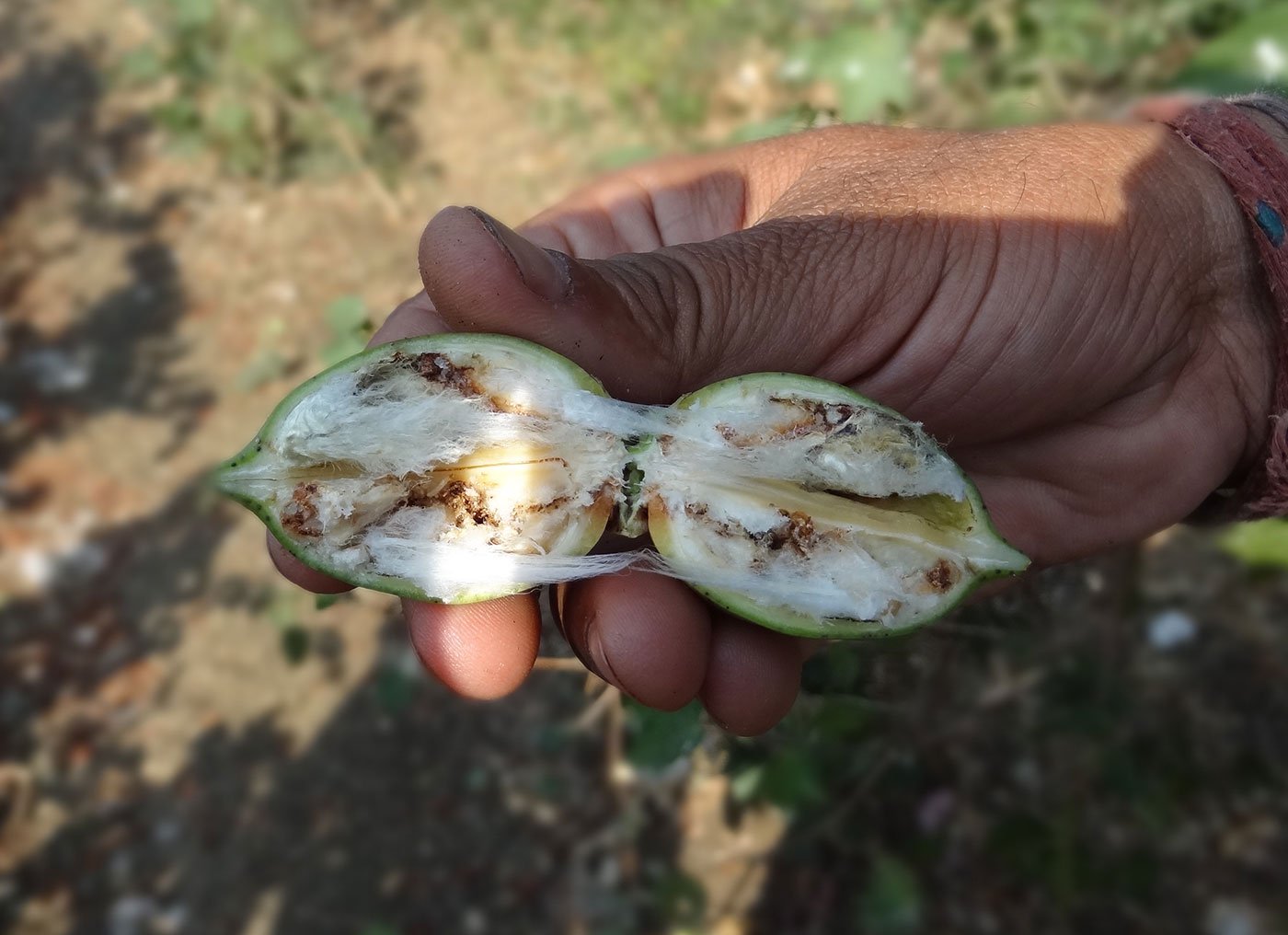
The virulent return of the bollworm sparked lethal spraying of pesticides last year. Right: the worm leaves tell-tale destructive scars on the cotton bolls
Pectinophora gossypiella (Saunders) , popularly known as the pink bollworm, had made a comeback in India after three decades – and with a vengeance. It was feasting on bollguard-II Bt-cotton bolls, the all-powerful second-generation GM cotton hybrids that were meant to build resistance to the worm. It was also a hint, as Kranthi had feared, that the American bollworm (so named because of its antecedents) might also eventually return (though so far, it hasn’t).
The pink-worm (presumed by the CICR and cotton researchers to be of India-Pakistan origin), and American bollworms were among the most lethal pests that troubled India’s cotton farmers in the 1970s and 1980s. By the 1990s, because of these pests, new pesticides were introduced for high yielding hybrid seeds. In the late 1990s, when Bt-cotton was introduced in India – with the Bt gene in hybrid seeds – it was supposed to be an answer to both types of pests.
But by the 2015-16 season, acres and acres of cotton crop were again affected by the pink bollworm, reducing yields at the time by an estimated 7-8 per cent, the CICR’s field studies showed.
The pink bollworm’s larva feeds only on a few crops such as cotton, okra, hibiscus and jute. It lays eggs on flowers, young bolls, axils, petioles and the undersides of young leaves. The young larvae penetrate the ovaries of flowers or young bolls within two days of hatching. The larvae turn pink in 3-4 days and their shade depends on the food they eat – dark pink results from eating maturing seeds. The affected bolls either open prematurely or they rot. Fibre qualities such as length and strength are lowered. The cotton lint in the infested bolls can get a secondary fungal infection too.
The pest spreads from the seed cotton carried to market yards. The pink bollworm generally arrives with the onset of winter and continues to survive on the crop as long as flowers and bolls are available. Long duration cotton allows the pest to thrive for a longer period in multiple cycles, thereby also affecting the subsequent crop. In the absence of a host crop, this pest is genetically conditioned to hibernate or diapause; this allows it to be dormant for 6-8 months, until the next season.
Anxiety and no alternatives
By May 2016, following CICR reports that bollworms are back in the saddle, the anxiety was evident at two high-level meetings in New Delhi of the Indian Council of Agriculture Research (ICAR) and the Indian Council of Scientific Research (ICSR), the country’s main agriculture and science research institutions. Officials discussed if any public sector projects on GM crops were likely to provide alternatives anytime soon.
“There’s no doubt that the bollworms are back,” Dr. Kranthi said in an article in 2016 in Cotton Statistics and News , a publication of the Cotton Association of India. “How best we can sustain the bollworm control efficacy of Bt-cotton until 2020 is a major concern,” he wrote.
No other new GM cotton technology – by either the Indian public sector or the private sector – is due for commercial approval after trials until 2020. The public sector so far has no presence in the GM seeds markets, though some of the agriculture institutions are working on GM research on various crops, including maize, soyabeans, brinjal and paddy.
In the ICAR-ICSR meetings, scientists pondered over the options to control the bollworms. “The best long-term strategy for India is to grow short-duration Bt-cotton hybrids or varieties that don’t last beyond January,” Kranthi had told this reporter in 2016. That would negate bollworms, because they attack the cotton mainly in winter. But most Indian seed companies produce Bt-hybrids that perform better in the long-duration.
And that year, the intensity of the assault on the crop was less than it has been in 2017-18.
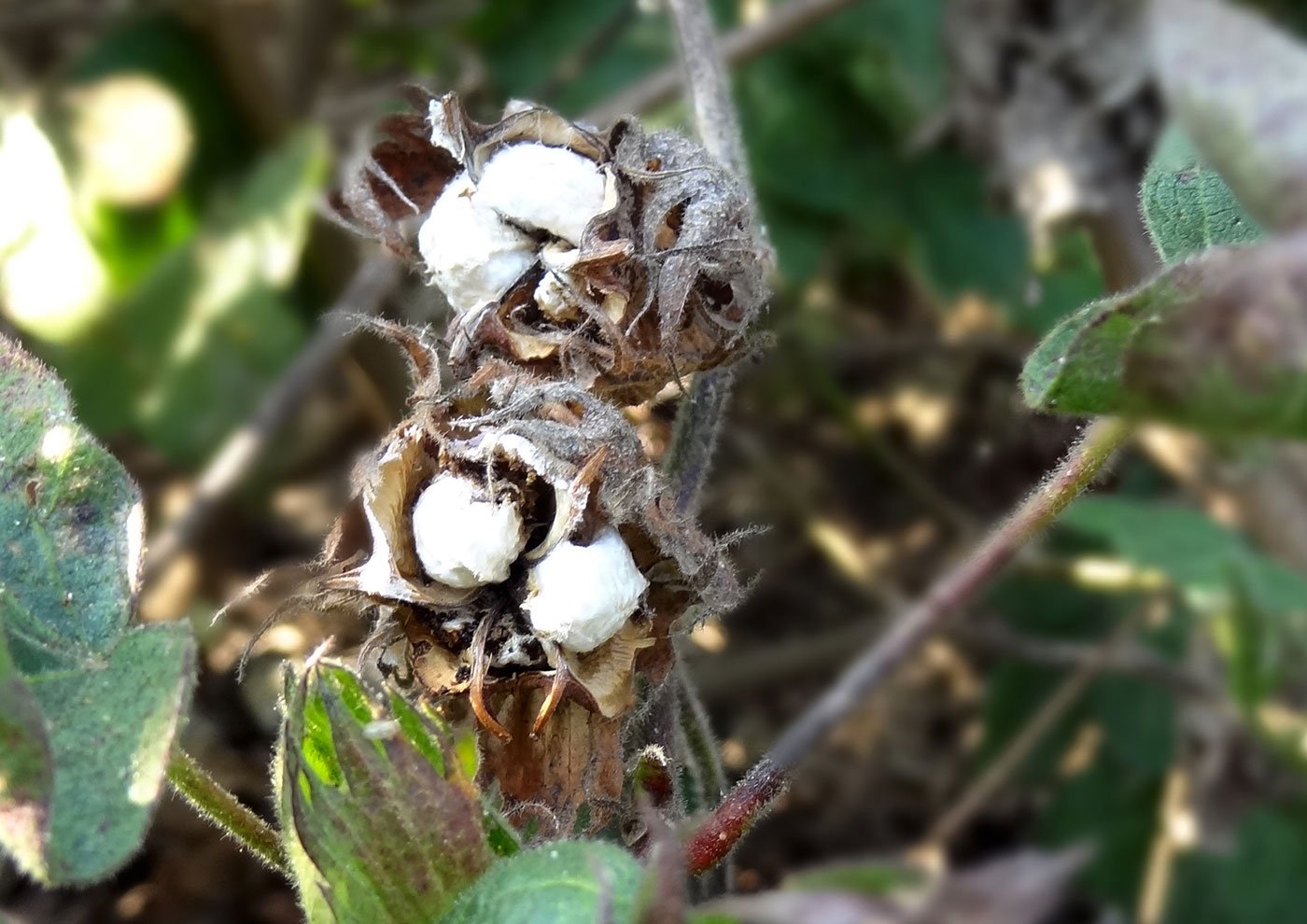
Wilting cotton plants and frayed bolls during the harvest in the winter of 2017-18, when Wadandre expected a bumper yield but ran into the pink-worm
Bt-cotton breaks down
“The much-touted technology [Bt-cotton or BG-I and its second generation BG-II] has broken down,” Kranthi told me in 2016. “It means farmers would now have to adjust to less-potent BG-I and BG-II technologies [in GM seeds] and go back to using insecticides to control bollworms, other than containing a set of other pests.”
Bt-cotton gets its name from bacillus thuringiensis , a soil-dwelling bacterium. The Bt seed contains cry (crystal) genes derived from the bacterium and inserted into the cotton plant genome (the genetic material of the cell) to provide protection against the bollworm.
Bt-cotton was meant to control the bollworm. But farmers will now find the worms surviving in Bt-cotton fields, Kranthi wrote in a series of essays in industry magazines and on his own CICR blog. Neither the ICAR nor the Union Agriculture Ministry seemed alert to the potential devastation at the time. The state and central government have since been aware of the extent of pink-worm devastation, but have not come up with a solution.
The American seed biotech multinational Monsanto has a virtual monopoly over India’s Bt-cotton seed market. The Indian government approved the release and sale of Bt-cotton in 2002-03. Monsanto, the technology provider, ‘transferred the technology’ to Indian seed companies at about 20 per cent royalty on every seed bag sold. The ostensible aims were to reduce the use of pesticides and increase the productivity of cotton – GM technology was promoted as a panacea for both purposes.
In the first year, a 400 grams bag of Bt-cotton hybrid seeds cost Rs. 1,800. Subsequently, the central and state governments stepped in to control the royalty or trait price and thereby the price of Bt-cotton seeds. Still, in the early years, while the cost of Bt-cotton seeds became roughly Rs. 1,000 for a 400 grams bag, Monsanto’s royalty remained 20 per cent of the retail price, according to seed market observers. The Indian Bt-cotton seed market, Dr. Kranthi wrote in 2016, is estimated to be worth Rs. 4,800 crores.
The global business of Bt-cotton is spread on 226 lakh hectares, of which only 160 lakh hectares is open to private technology providers. In 2014-15, Bt-cotton in India occupied 115 lakh hectares. In 2006-7, Monsanto released BG-II hybrids, saying the new technology was more potent, more durable. These slowly replaced BG-I. And by now, BG-II hybrids occupy over 90 per cent of the around 130 lakh hectares under cotton in the country, according to government estimates.
The bollguard BG-II technology, which involves introducing Cry1Ac and Cry2Ab genes from the bacillus thuringiensis into cotton plants, is claimed to build resistance against three pests: American bollworm (Helicoverpa armigera), pink bollworm and spotted bollworm (Earias vittella). The first generation hybrids, or Bt-cotton, contained only one Cry1Ac gene in the seeds.
All along, Dr. Kranthi wrote in another essay, there has been no roadmap for the sustainable use of Bt technology in India, in consonance with ecology and environment. At least six different Bt-events were approved by the Genetic Engineering Approval Committee of the Ministry of Environment, without any event-specific plans devised for their sustainability.
A gene in the bacterium Bacillus thuringiensis produces a protein that acts as a bollworm-resistant toxin. Scientists develop gene constructs that can be transferred to cotton seeds so the plants can resist bollworms. This is GM cotton. When such a gene construct takes its position on a chromosome of the plant genome, it is called an 'event'.
But the warnings were never taken seriously, even when resistance issues were pointed out, Kranthi wrote. Resistance is an evolutionary process. In agriculture, insect resistance is said to have developed when previously effective techniques are no longer controlling the target pest. Instead, more than a thousand hybrid Bt-cotton variations by private companies in India – crossing Bt events with their own seeds – were approved within just four to five years, he wrote, creating chaos for agronomy and pest management. As a result, the Indian cotton farmer’s inability to manage pests will keep growing.
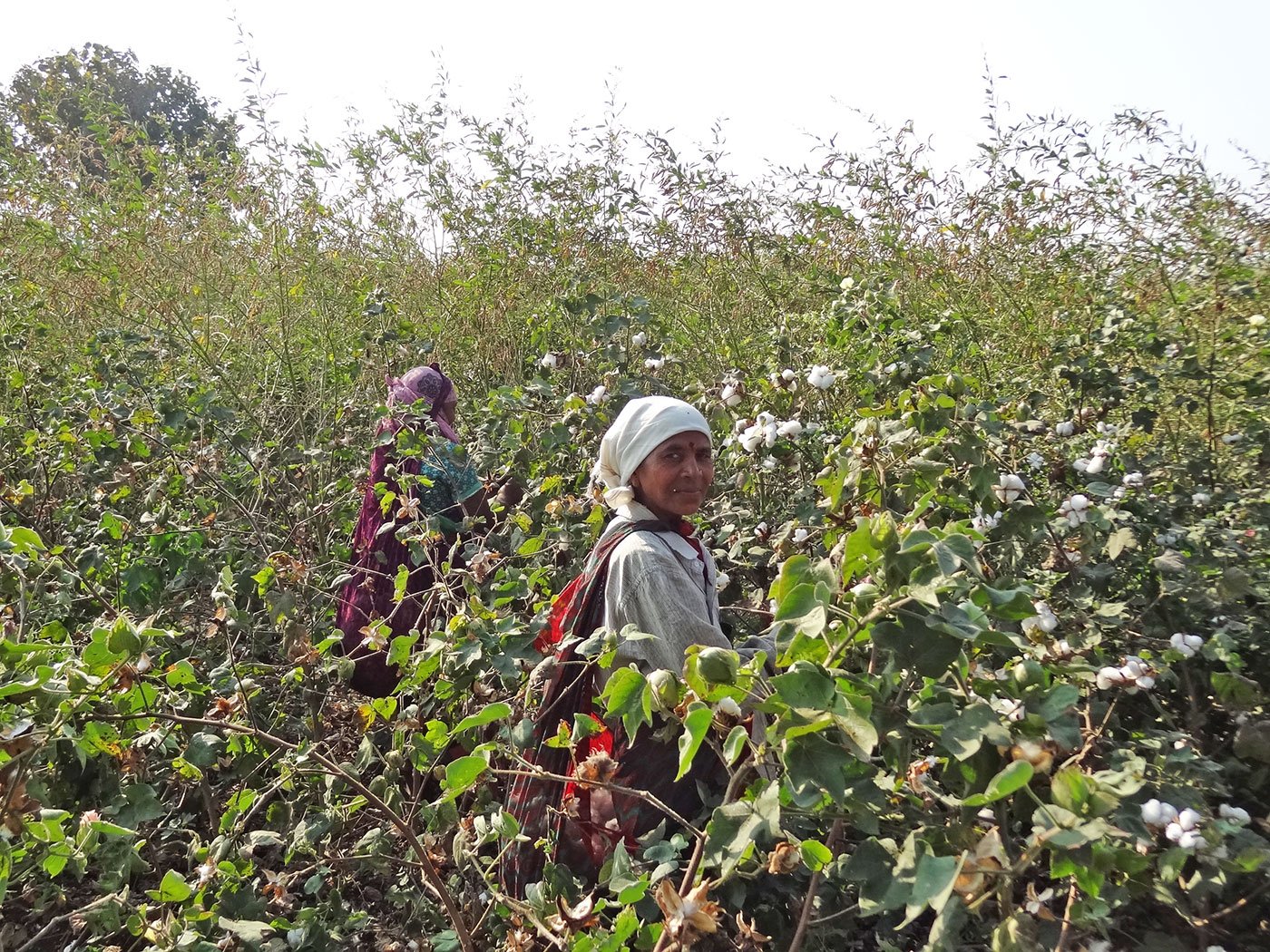
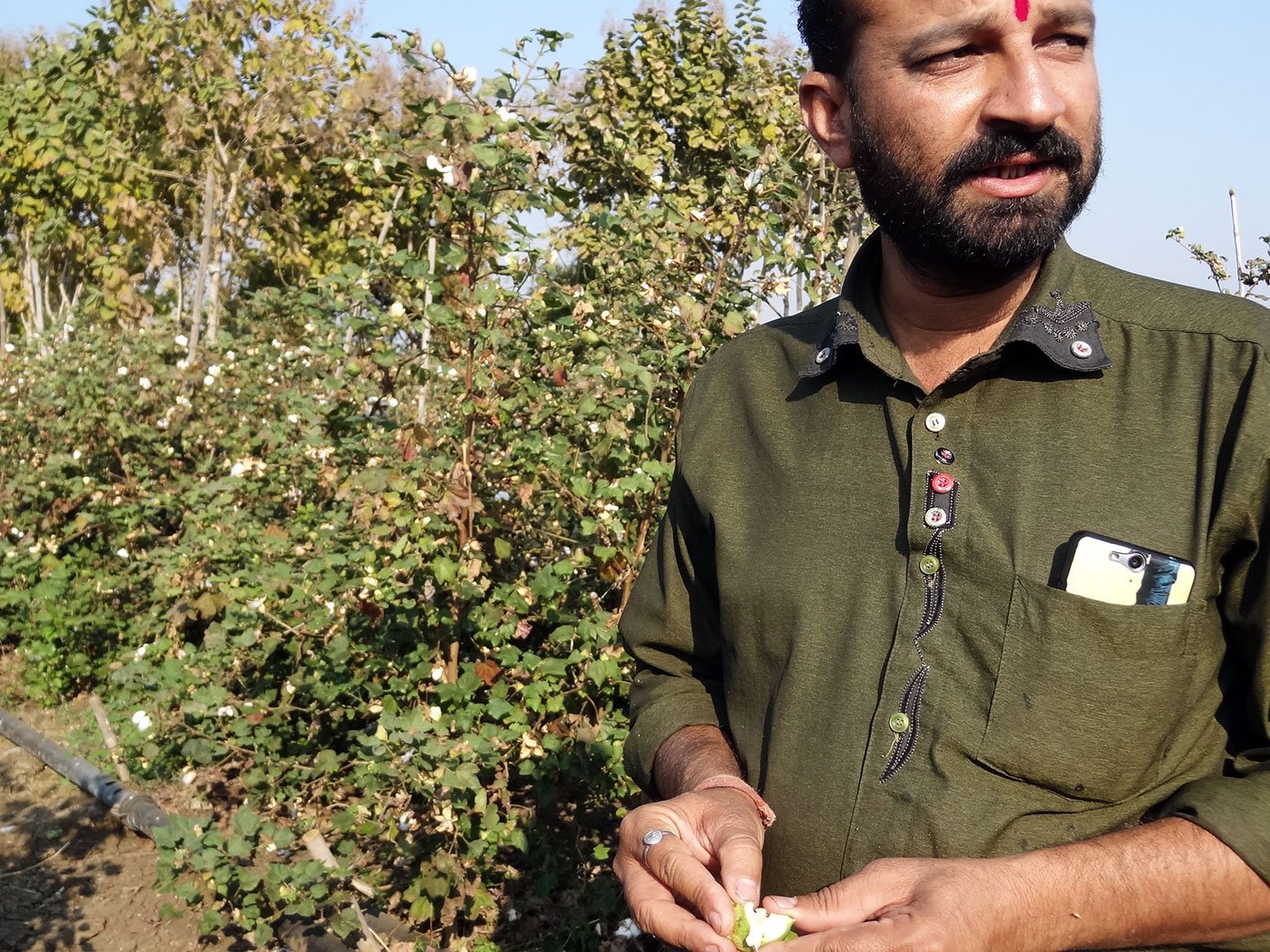
Labourers on Wadandre’s forlon cotton field said the pink-worm infestation made plucking lint from the bolls very difficult, and the quality was also poor
In 2017, India saw a massive planting of herbicide-tolerant (HT) cotton seeds. HT-cotton is Monsanto’s new cotton seed. It’s not yet cleared by the government for commercial sale, but seed companies and unregistered firms have already sold these seeds to farmers. However, HT-cotton seeds are not an antidote to the bollworm or other pests. The cotton plant that grows out of such seeds is supposed to resist chemicals used to kill weeds and wild herbs, without affecting the cotton plants.
Now, in 2018, Dr. Kranthi’s warnings have come true. When the first reports of pink bollworm infestation surfaced in Gujarat in 2010, it was in a very small area and on BG-I cotton. Between 2012 and 2014, it spread to a large area on BG-II.
In the 2015-16 season, surveys conducted by CICR showed that the survival of the pink bollworm larvae on BG-II was significantly higher across Gujarat and the pest had developed resistance to Cry1Ac, Cry2Ab, and Cry1Ac+Cry2Ab (three different variants), particularly in Amreli and Bhavnagar districts.
Farmers were already using insecticides to contain the pink bollworm in addition to other insects, mainly sucking pests. The damage, according to the CICR’s extensive field surveys in December 2015, was more in the green bolls for second and third pickings – white cotton is picked by farmers from bolls as they come to flowering in stages spanning four, sometimes, five months, October through March.
The CICR’s studies came up with several factors for the resurgence of pink bollworm and failure of BG-II. Among others: cultivation of long duration hybrids that serve as continuous hosts of the pink bollworm.
Dr. Kranthi says Bt-cotton in India should have been released in open pollinated varieties (or straight-line desi cotton), not in hybrids. India is the only country to have permitted Bt genes to be impregnated in the hybrid varieties instead of straight-line – the farmers need not buy seeds from the market again if they plant straight-line varieties, but with hybrids, they have to buy the seeds every year.
“BG-II should not have been approved in long duration hybrids,” he said. “We did exactly the opposite.”
The return of the pink bollworm and the damage it caused to the farmers in the last three years has pitched Indian cotton-seed companies, around 50 of them, against Monsanto, from whom they had sourced the BG-I and BG-II cotton technology. At least 46 companies refused to pay royalty to Monsanto in 2016-17 – but that is a different story.
There is no new GM technology in sight now or in the near future that promises to replace BG-II. Neither is any technology available for more effective insecticides. India is in deep trouble on its fields of cotton, a crop that occupies vast stretches of land and creates millions of workdays in rural India.
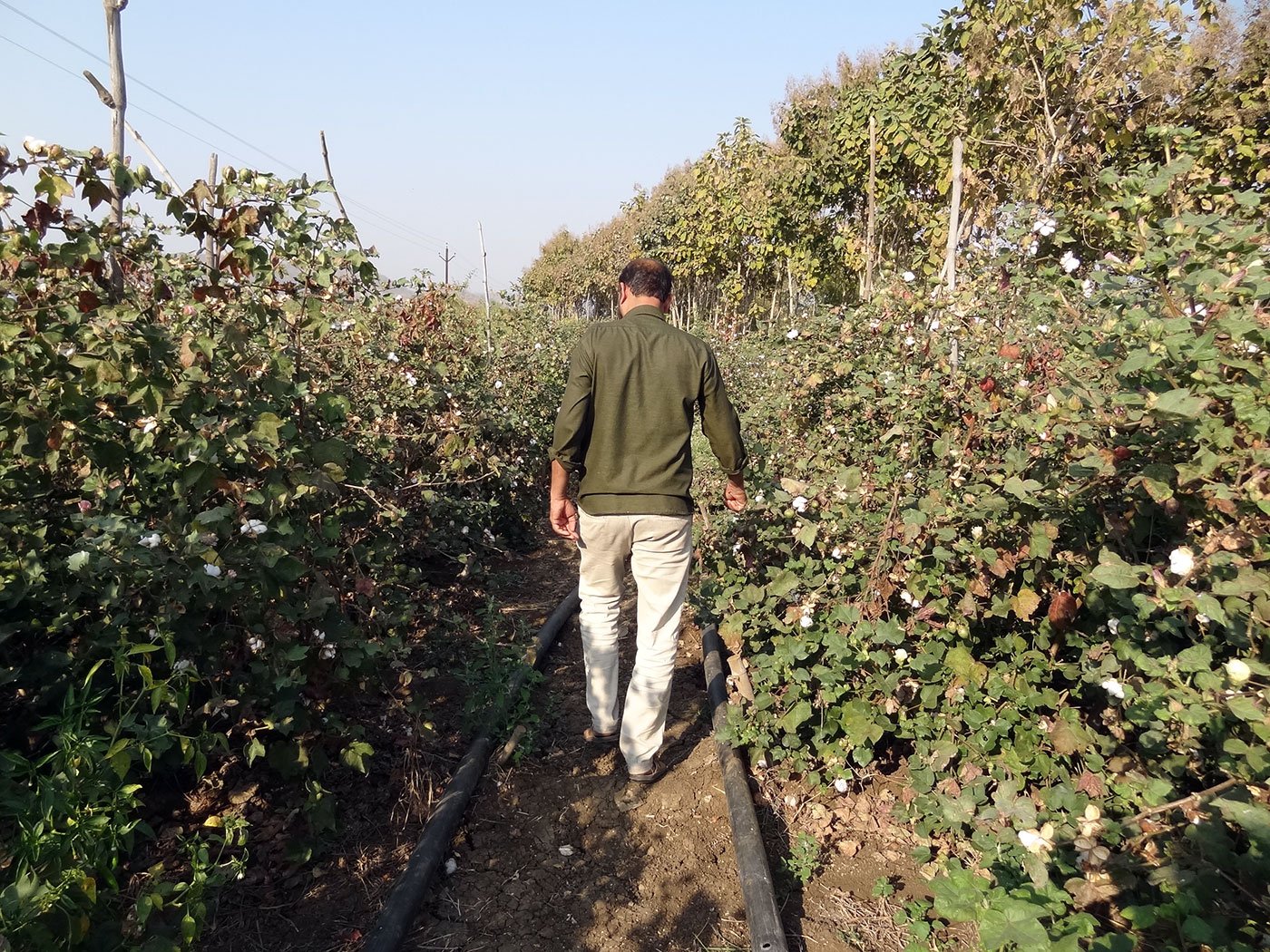
Wadandre abandoned his initially promising cotton crop in January 2018. '... this year is devastating', he said
‘I might flatten my farm soon’
In Amgaon (Kh) village, Wadandre – the beleaguered cotton farmer – abandoned his crop in January 2018. The plucking costs, he told me, would overrun the money he might have got by selling the battered cotton. “You see these plants – it looks as if these would give me a bumper yield. But this year is devastating,” he said, walking through rows of tall and robust plants that needed to be supported by bamboo sticks to hold them straight.
Many of cotton farmers in Maharashtra, after another disastrous season, flattened their plants when much of the cotton remained un-harvested. Some in Yavatmal district ran bulldozers on the standing crop, others just abandoned the cotton in distress and disgust as the worms swarmed over large swathes of the snowy white fields.
The harvesting period came not long after many accidentally inhaled pesticides in western Vidarbha: about 50 farmers died, about a thousand took seriously ill, some of them lost their eyes in July-November 2017.
As the winter peaked in January – a time the pink-worm relishes – the cotton peasantry stood shattered by the impending losses.
When I met Wadandre in January, he said, “I might flatten my farm soon,” showing us the bolls tormented by the tiny but lethal pest. I had met him twice before, but this time around, the bolls looked more completely devastated by the pink-worm than on the previous occasions. No amount of pesticides will help tame the worm, since it bores into the bolls and protects itself from chemical sprays, and multiplies really fast, he said.
Wadandre’s worries speak of a storm brewing in India’s cotton fields.
